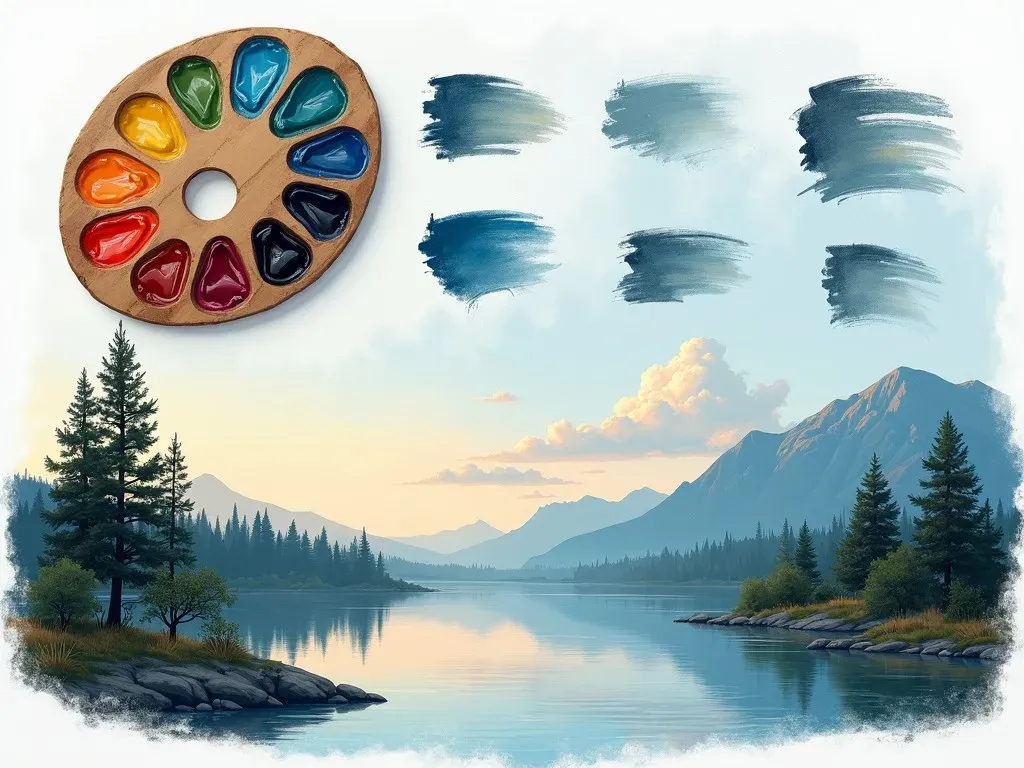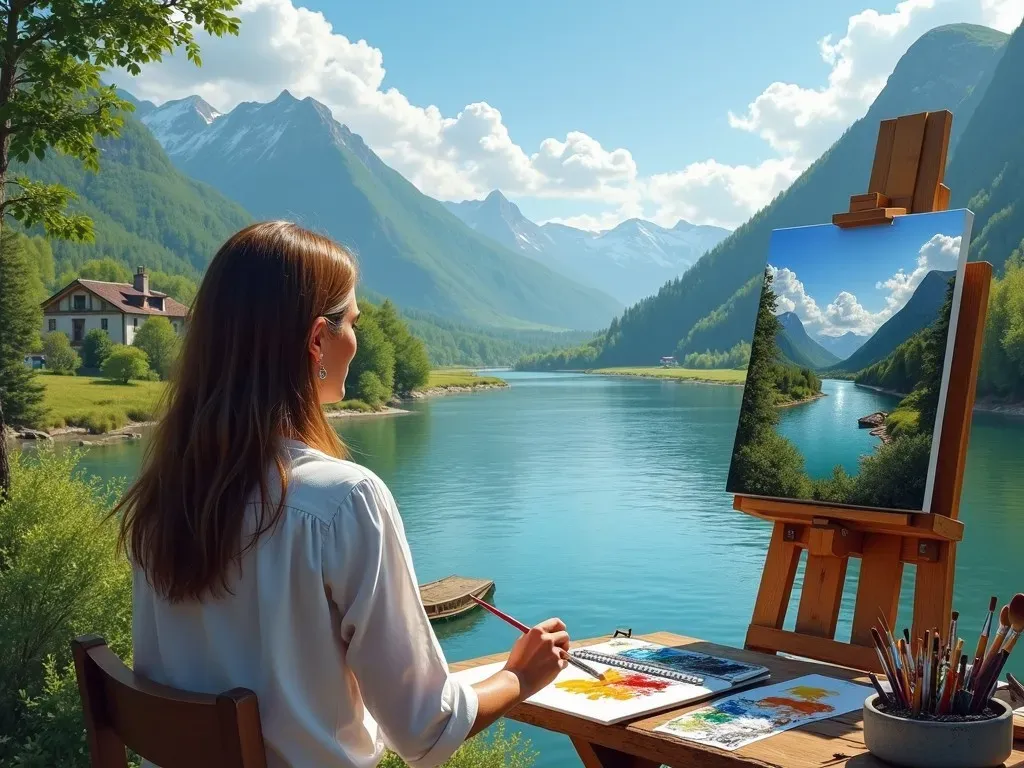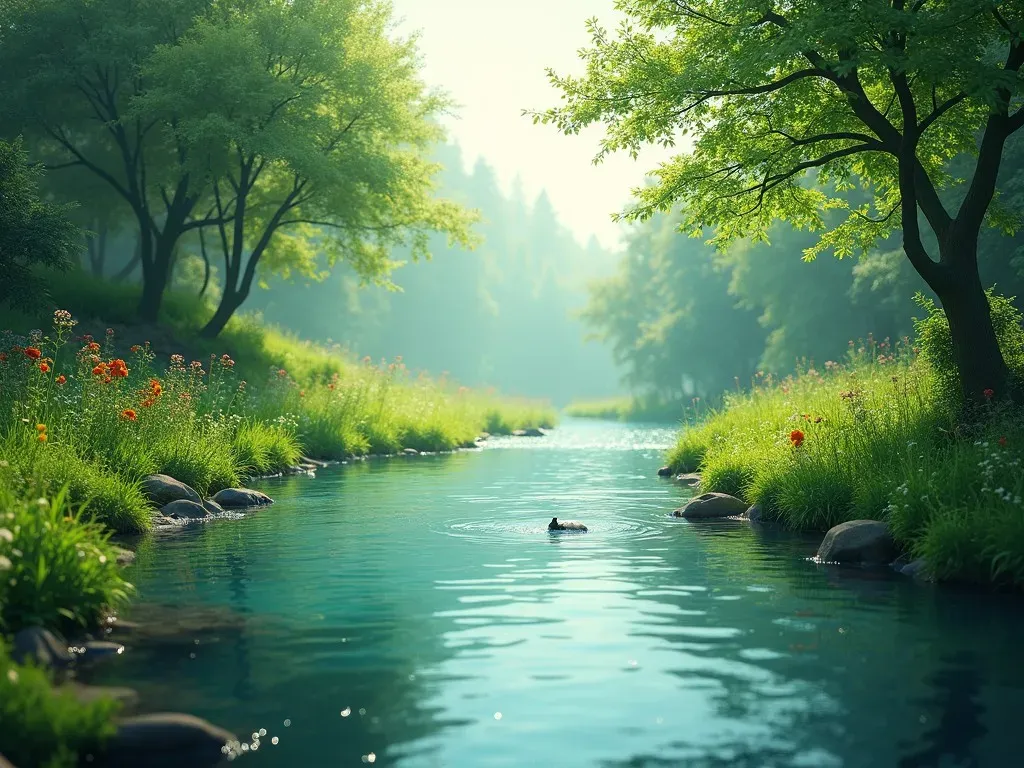Painting of a river captures the essence of nature and serenity, showcasing the flowing waters alongside lush landscapes. The beauty of rivers in artwork has inspired countless artists through the ages, leading to stunning depictions that evoke feelings of calm and wonder. From historical masterpieces to contemporary interpretations, artwork featuring rivers allows viewers to escape into tranquil worlds.
The Historical Significance of River Paintings
Rivers have been a pivotal subject in art history, representing life, movement, and reflection. Throughout art movements—from the Romanticism of J.M.W. Turner to impressionistic interpretations by claude monet—rivers have been woven into the fabric of countless masterpieces.
Famous River Paintings & Their Artists:
| Painting Title | Artist | Year | Style |
|---|---|---|---|
| The Fighting Temeraire | J.M.W. Turner | 1839 | Romanticism |
| La Grenouillère | Pierre-Auguste Renoir | 1869 | Impressionism |
| A River Landscape | Leonardo da Vinci | 1511-13 | Renaissance |
| The Oxbow | Thomas Cole | 1836 | Hudson River School |
| Water Lilies | Claude Monet | 1916 | Impressionism |
The significance of rivers can also be seen in their symbolism, often reflecting emotions and environments ranging from peaceful to turbulent. Artists like John Frederick Kensett, known for his luminous landscapes featuring rivers, helped to shape the American art scene by portraying nature in an inspiring and contemplative manner.
Techniques in Painting Rivers: A Guide
When delving into the creation of a river oil painting, it’s important to master several key Techniques. Whether choosing oil, acrylic, or watercolor, here are essential tips for capturing the natural beauty of a river:
- Color Palette: Use a variety of blues, greens, and earthy shades. Rivers reflect the sky and surrounding foliage, so blend soft pastels to dark hues for depth.
- Brushstrokes: Apply fluid brushstrokes that mimic the flow of water. This creates a sense of motion, which is crucial in portraying rivers realistically.
- Layering: Implement layering techniques; start with base colors and gradually build with highlights and shadows to add dimension.
- Reflection: Focus on depicting reflections accurately by mirroring shapes and colors of nearby objects on the water surface.
- Details: Add elements like rocks, foliage, and banks to enrich the overall composition. This enhances the scene’s realism and depth.

The Environmental Impact of Rivers in Art
Rivers serve as a reminder of the importance of conservation and the fragility of ecosystems. Artists today often convey messages surrounding environmental issues through river depictions. For instance, rivers may illustrate the effects of pollution or climate change, linking artistic expression with advocacy for nature.
Notable Modern River Artists
- David Hockney: Renowned for his bright, colorful landscapes, Hockney’s river paintings reflect both realism and abstraction.
- Julie Heffernan: Heffernan integrates rivers into fantastical landscapes that engage with themes of nature and humanity’s impact on the environment.
- Liu Dan: His ink paintings often feature rivers symbolically, merging tradition with a modern narrative of nature’s relevance.
Tips for Creating Your River Oil Painting
Creating a painting of a river requires both technique and sentiment. Here are additional tips for amateur and seasoned artists alike:
-
Sketch Your Composition: Before applying any paint, sketch the outline with light pencil strokes to establish the flow and layout of the river within your artwork.
-
Study Real Landscapes: Spend time observing rivers in person or through high-quality images to understand their colors, reflections, and textures.
-
Experiment with Mediums: While oil paints are fantastic, don’t hesitate to explore acrylics or watercolors. Each medium will offer a different feel and technique for depicting water.
-
Utilize Tutorials: A plethora of online resources and tutorials are available that can guide you through specific painting techniques. Websites like MightyPaint offer detailed guides on creating realistic river water effects.

FAQ Section
Q1: What materials do I need to start painting a river?
A1: You’ll need your choice of paint medium (oil, acrylic, or watercolor), brushes in various sizes, a palette, canvas or paper, and an easel.
Q2: How do I choose the right colors for my river painting?
A2: Look at real-life examples and consider the time of day—morning light has softer hues, while sunset can create vibrant colors reflecting on water.
Q3: Can I use photographs for reference in my river painting?
A3: Absolutely! Photographs can be very useful, but it’s essential to interpret them creatively rather than replicating them blindly.
Q4: What’s the most challenging aspect of painting rivers?
A4: Capturing the movement and essence of water can be complex due to the reflections and light interplay—practice is key to mastering this.
Influences in Art: Rivers Beyond Painting
The cultural significance of rivers extends beyond painting into literature, music, and photography, highlighting their multifunctionality as symbols, settings, and subjects. Many renowned authors, such as Mark Twain and Ernest Hemingway, have utilized rivers in their narratives, adding depth to their explorations of human experience.
In modern times, river-centric art and activism intersect as artists use their talents to raise awareness about climate issues related to water bodies. This provides a unique platform for advocacy while celebrating the beauty of rivers.

The exploration of rivers in art continues to evolve, showcasing humanity’s intricate relationship with these flowing arteries of life. Through vibrant oil paintings and tranquil watercolors, artists not only illustrate nature’s grandeur but also invite viewers to reflect on their own connection to the ever-flowing rivers around them.
